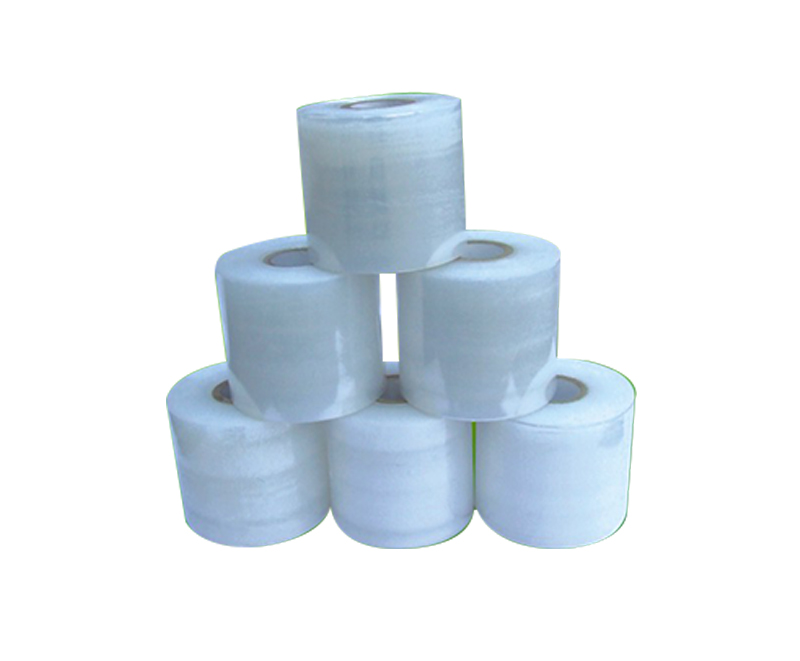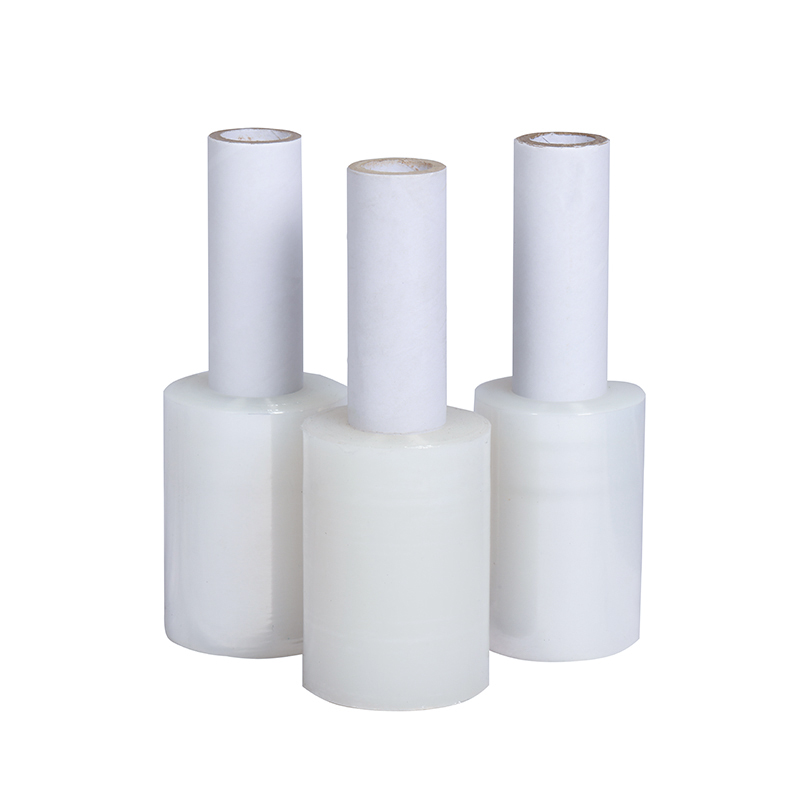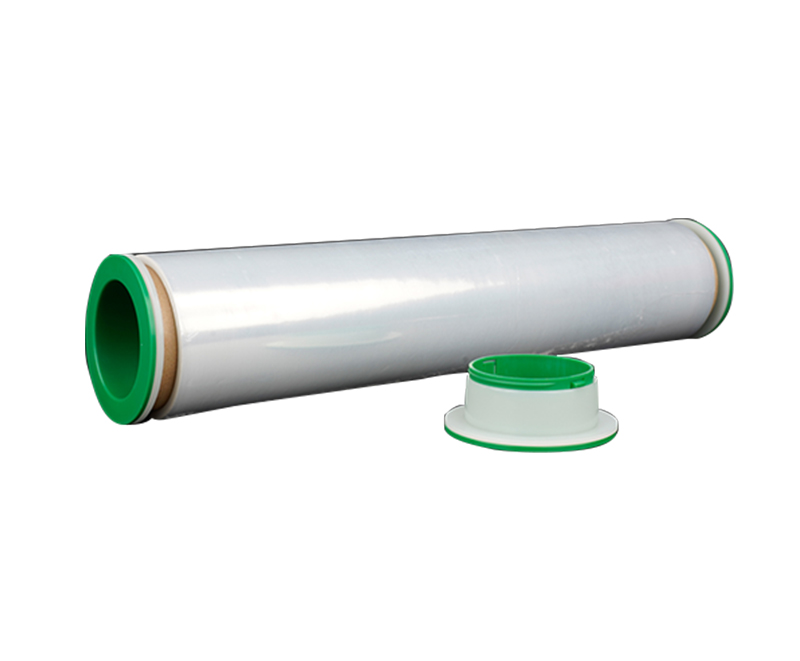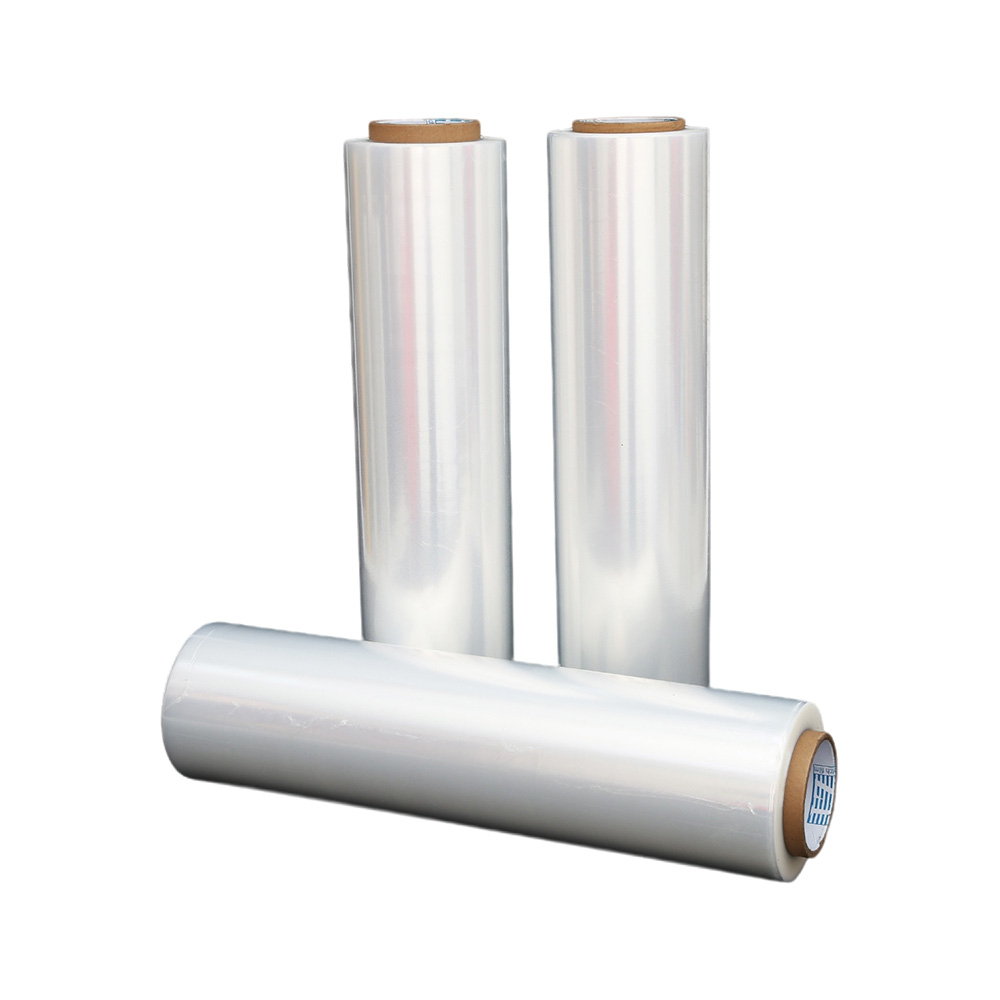Gauge to Micron and Millimetre Conversion Guide
Source:Gauge to Micron and Millimetre Conversion GuideTime:2025-04-12Visitors:
In the world of packaging, plastics, and manufacturing, understanding material thickness is critical. Whether you’re selecting stretch wrap for pallets or shrink wrap for retail products, terms like gauge, micron, and millimetre pop up constantly. But what do they mean, and how do you convert between them? Getting it wrong could mean ordering the wrong film thickness, leading to costly damage or inefficiencies.
This Gauge to Micron and Millimetre Conversion Guide is your one-stop resource for mastering these measurements. We’ll break down each unit, provide precise conversion formulas, offer a handy conversion table, and share practical tips for applying this knowledge—especially in packaging. Whether you’re a warehouse manager, small business owner, or DIY enthusiast, you’ll find tools and insights to ensure your materials meet your needs. Let’s dive in.

Understanding Gauge, Micron, and Millimetre
Before we crunch numbers, let’s clarify what these units mean and why they matter.
Gauge
Gauge measures material thickness, most commonly for plastic films (e.g., stretch wrap, shrink wrap) and wires. In packaging, gauge refers to the thickness of plastic films, with higher numbers indicating thicker films. For example, Dongguan Zhiteng Plastic Product Co., Ltd. produces stretch films ranging from 0.006 mm to 0.08 mm, often listed in gauge for customer specs.
- Origins: Gauge stems from older measurement systems, like wire gauge, but in plastics, it’s standardized differently.
- Key Note: Plastic film gauge differs from wire gauge (e.g., American Wire Gauge, AWG), which can cause confusion.
Micron
A micron (or micrometre) is a metric unit equal to one-millionth of a metre, or 0.001 millimetres. It’s used for precise measurements, especially in thin materials like packaging films.
- Symbol: µm.
- Use Case: Suppliers often list film thickness in microns for global clarity, as it’s a standard metric unit.
Millimetre
The millimetre (mm) is a familiar metric unit, equal to one-thousandth of a metre. It’s widely used worldwide for material specs, offering a straightforward way to express thickness.
- Use Case: Millimetres are common in technical drawings or when gauge/microns are converted for simplicity.
Why Conversions Matter
Converting between gauge, micron, and millimetre ensures you order the right material. A supplier might list a stretch film as “80 gauge,” while your equipment requires microns. Misinterpreting specs could lead to films that tear too easily or waste material. This guide, inspired by experts like Dongguan Zhiteng with over 23 years in packaging, will help you navigate these units confidently.
Conversion Formulas and Relationships
Converting between gauge, micron, and millimetre is straightforward with the right formulas. Here’s how they work for plastic films:
Gauge to Micron
- Formula: 1 gauge = 0.254 microns (µm).
-
Calculation: Multiply gauge by 0.254.
-
Example: 100 gauge × 0.254 = 25.4 microns.
-
Micron to Millimetre
- Formula: 1 micron = 0.001 millimetres (mm).
- Calculation: Divide microns by 1,000.
-
Example: 25.4 microns ÷ 1,000 = 0.0254 mm.
Gauge to Millimetre
- Formula: 1 gauge = 0.000254 millimetres (mm).
-
Calculation: Multiply gauge by 0.000254.
-
Example: 100 gauge × 0.000254 = 0.0254 mm.
-
Reverse Conversions
-
Microns to Gauge: Divide microns by 0.254.
- Example: 20 microns ÷ 0.254 = ~78.74 gauge.
-
Millimetres to Microns: Multiply mm by 1,000.
- Example: 0.02 mm × 1,000 = 20 microns.
-
Millimetres to Gauge: Divide mm by 0.000254.
- Example: 0.0254 mm ÷ 0.000254 = 100 gauge.
Important Notes
-
These formulas apply to plastic films. Wire gauge (e.g., AWG) or metal sheet gauge uses different standards, so always confirm the context.
-
Rounding may occur in practical settings, but precision matters for high-stakes applications like food-safe films.
Conversion Table
For quick reference, here’s a conversion table covering common thicknesses for packaging films:
This table aligns with typical ranges for stretch wrap and shrink wrap, like Dongguan Zhiteng’s films (0.006–0.08 mm or ~23.6–315 gauge).
Step-by-Step Conversion Examples
Let’s walk through practical examples to make conversions crystal clear.
Example 1: Converting 80 Gauge Stretch Film
- Goal: Convert 80 gauge to microns and millimetres.
- Gauge to Microns: 80 × 0.254 = 20.32 microns.
- Microns to Millimetres: 20.32 ÷ 1,000 = 0.02032 mm.
- Result: 80 gauge = 20.32 microns = 0.02032 mm.
- Use Case: Confirming a stretch film’s thickness for pallet wrapping.
Example 2: Converting 20 Microns to Gauge
- Goal: A supplier lists a shrink wrap as 20 microns; convert to gauge.
- Microns to Gauge: 20 ÷ 0.254 = ~78.74 gauge.
- Result: 20 microns ≈ 79 gauge (rounded for practicality).
- Use Case: Checking if the film matches your machine’s 80-gauge setting.
Example 3: Converting 0.025 mm to Gauge
- Goal: A spec sheet lists 0.025 mm; convert to gauge.
- Millimetres to Gauge: 0.025 ÷ 0.000254 = ~98.43 gauge.
- Result: 0.025 mm ≈ 98 gauge.
- Use Case: Ensuring a film meets retail packaging needs.
Applications in Packaging and Beyond
Understanding thickness conversions is vital across industries. Here’s how gauge, micron, and millimetre apply:
Plastic Films
- Stretch Wrap: Typically 50–200 gauge (12.7–50.8 microns, 0.0127–0.0508 mm). Thinner films (e.g., 60 gauge) suit light loads; thicker ones (e.g., 150 gauge) handle heavy pallets.
- Shrink Wrap: Ranges from 60–200 gauge, used for retail, food, or industrial packaging. Example: Dongguan Zhiteng’s films (0.006–0.08 mm) cover diverse needs.
- Scenario: A warehouse manager converts 100 gauge stretch film (25.4 microns) to ensure it’s durable for sharp-edged crates.
Wires and Metals
- Wire Gauge: Uses AWG, where higher numbers mean thinner wires (unlike plastic gauge). Conversions differ, so clarify the context.
- Metal Sheets: Gauge standards vary (e.g., steel vs. aluminum), often requiring separate charts.
- Scenario: An electrician avoids mixing wire gauge with film gauge when ordering packaging.
Other Uses
- Fabrics: Thickness in microns for technical textiles.
- 3D Printing: Filament thickness in millimetres for precision.
- Coatings: Micron measurements for paint or protective layers.
How Thickness Impacts Material Performance
Thickness isn’t just a number—it affects how materials perform:
- Strength and Durability: Thicker films (e.g., 150 gauge = 38.1 microns) resist punctures, ideal for heavy or sharp loads. Example: 120 gauge shrink wrap for machinery.
- Clarity: Thinner films (e.g., 60 gauge = 15.24 microns) offer better transparency, crucial for retail barcode scanning.
- Cost: Thicker films cost more but reduce damage risks, while thinner films save upfront but may tear.
- Sustainability: Down-gauging (e.g., 50 gauge = 12.7 microns) uses less plastic, aligning with eco-friendly trends like Dongguan Zhiteng’s green films.
Scenario: A retailer chooses 80 gauge (20.32 microns) shrink wrap for clarity on gift baskets, balancing cost and aesthetics.
Common Conversion Mistakes to Avoid
Conversions seem simple, but errors happen. Watch out for:
- Mixing Gauge Types: Plastic film gauge (1 gauge = 0.254 microns) differs from wire gauge (AWG) or metal gauge. Always confirm the material.
- Misreading Specs: Assuming “100 gauge” equals “100 microns” (it’s actually 25.4 microns).
- Ignoring Tolerances: High-precision applications (e.g., food-safe films) require exact conversions, not rough estimates.
- Rounding Too Early: Round only at the final step to avoid cumulative errors.
Tip: Double-check with a supplier like Dongguan Zhiteng (zt@dgztpacking.com) to verify specs before ordering.
Tools for Easy Conversions
Make conversions effortless with these tools:
- Conversion Table: Use the table above for quick lookups, especially for 50–200 gauge films.
-
Online Calculators: Look for tools where you input gauge and get microns/mm instantly. Features to seek:
- Plastic film-specific settings.
- Reverse conversion options.
- Mobile-friendly design for on-the-job use.
- Manual Calculations: For rough estimates, memorize key ratios (e.g., 100 gauge ≈ 25 microns).
- Supplier Support: Companies like Dongguan Zhiteng clarify specs to match your needs.
Industry Standards and Best Practices
Understanding typical ranges and standards ensures you choose the right thickness:
- Stretch Wrap: 50–150 gauge (12.7–38.1 microns, 0.0127–0.0381 mm) for pallets, per Dongguan Zhiteng’s 0.006–0.08 mm range.
- Shrink Wrap: 60–200 gauge (15.24–50.8 microns) for retail or industrial use.
- Food-Safe Films: Require precise microns (e.g., 20–30 µm) and certifications like ROHS, as offered by Dongguan Zhiteng.
-
Best Practices:
-
Match thickness to load: Light retail (60–80 gauge), heavy industrial (120–200 gauge).
-
Request samples to test film performance.
-
Confirm supplier units (gauge vs. microns) to avoid mismatches.
-
Conclusion
Mastering gauge, micron, and millimetre conversions unlocks smarter material choices, whether you’re wrapping pallets, sealing retail goods, or tackling DIY projects. With formulas (1 gauge = 0.254 microns), a handy conversion table, and practical tips, this guide equips you to navigate specs confidently. Thickness impacts strength, clarity, cost, and sustainability—so getting it right matters.
Need help choosing the perfect film? Test conversions, consult experts, and partner with a trusted supplier. At Dongguan Zhiteng Plastic Product Co., Ltd., our 23+ years of packaging expertise ensure you get the right stretch or shrink wrap for any job. Contact us at zt@dgztpacking.com or +86-13427862379 to simplify your specs and secure your goods. Let’s measure up to a better future.
FAQ
Q: How many microns is 100 gauge?
A: For plastic films, 100 gauge = 25.4 microns (100 × 0.254).
Q: What’s the difference between gauge and micron?
A: Gauge measures plastic film thickness (1 gauge = 0.254 microns); microns are metric (1 micron = 0.001 mm).
Q: What gauge is best for stretch wrap?
A: Light loads use 60–80 gauge (15.24–20.32 microns); heavy loads need 120–150 gauge (30.48–38.1 microns).
Q: Can I convert wire gauge to microns the same way?
A: No, wire gauge (AWG) uses a different standard. Use plastic film formulas for packaging.
Recommended Products
Ranked in the same article
- how to use the stretch film technology to r
- How can we get detailed price list?
- Five common quality problems of PE protecti
- Plastic film degradation
- How to guarantee punctual shipment for our
- Gauge to Micron and Millimetre Conversion G
- What is the difference between stretch film
- Testing the permeability of stretch film
- Stretch film temperature requirements
- Electrical wire film VS electrostatic film
- Why insufficient transparency of stretch w
Latest news articles
- Bundling Stretch Film: Optimize Your Packag
- The significance of using PE electric wire
- Stretch Film Wrap: Unraveling Its Benefits
- Factors affecting viscosity of PE stretch f
- The Ultimate Guide to Choosing the Right Ma
- Advantages of white engineering film
- How to check the quality of PE stretch film
- The 133rd Spring Canton Fair
- How can PE stretch film be cut better?
- What Properties Ensure Effective Cold Chain
- What is the Difference Between Magic Tape a



